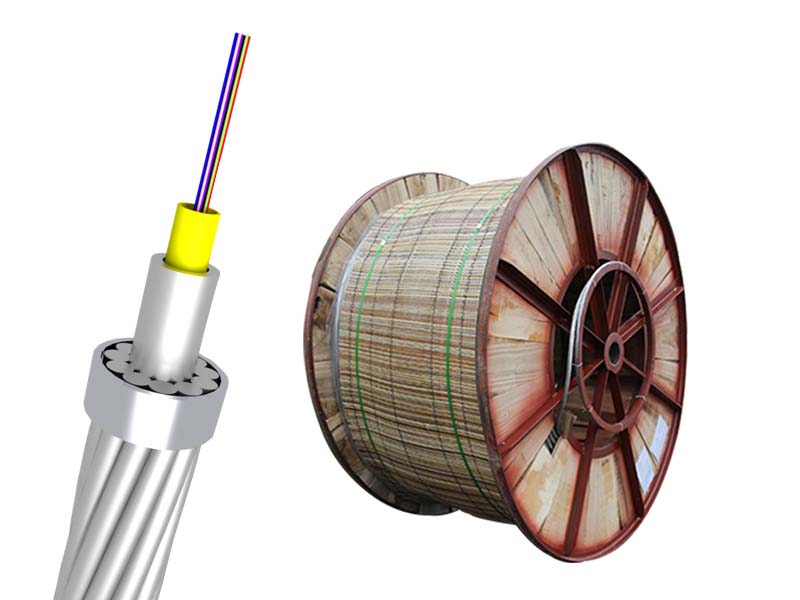
OPGW, also known as Optical Fiber Composite Overhead Ground Wire, is a dual-function optical cable. It is designed to replace the traditional static/shield/ground wires on overhead transmission lines and has the added benefit of containing optical fiber that can be used for telecommunication purposes.
The OPGW must be able to withstand the effects of environmental factors such as wind and ice. The OPGW must also be able to handle electrical faults on the transmission line by providing a path to ground without damaging the sensitive optical fibers within the cable.
The OPGW cable design consists of an optical fiber core (with multiple subunits depending on the number of optical fibers) encased in a sealed hardened aluminum tube and covered with one or more layers of steel and/or alloy wires.
ACS (Aluminum Clad Stainless Steel Tube) OPGW cables are preferred for their central aluminum clad stainless steel tube and color coded fibers that simplify the splicing process while providing optimal fiber protection and long-term product reliability. Stranded tube OPGW cables use fiber-containing stainless steel tubes stranded together with aluminum clad steel and/or aluminum alloy wires to create a multi-layer cable design suitable for a variety of environmental and geographic conditions and capable of accommodating higher fiber counts. Central tube OPGW cables are preferred for their compact size and ability to accommodate up to 48 fibers in the same diameter product. The central stainless steel tube is covered with a layer of aluminum clad steel and/or alloy wires, and this compact design provides a more robust configuration than those bare stainless steel tubes covered only by wires.